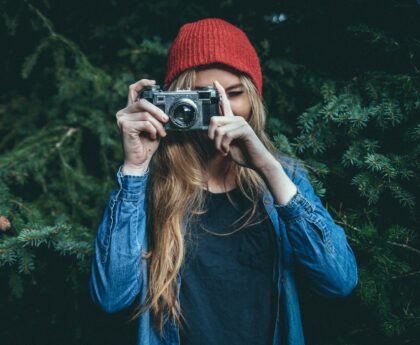“Capture the Wild Side of Nature with Unique Wildlife Photography!”
Introduction
Wildlife photography is a great way to capture the beauty of nature and the animals that inhabit it. Taking unique wildlife photographs requires patience, skill, and a bit of luck. You need to be able to anticipate the behavior of the animals you are photographing, and be prepared to capture the perfect moment. You also need to be aware of the environment and the lighting conditions, as well as the best angles and composition for your shots. With the right equipment and a bit of practice, you can take stunning wildlife photographs that will be cherished for years to come. In this guide, we will discuss the basics of wildlife photography and provide tips on how to take unique wildlife photographs.
How to Choose the Right Camera and Lens for Wildlife Photography
Wildlife photography is a challenging and rewarding form of photography. Capturing the beauty and majesty of animals in their natural habitats requires the right camera and lens. Choosing the right equipment for wildlife photography can be daunting, but with a few tips, you can make the right decision for your needs.
When selecting a camera for wildlife photography, it is important to consider the type of camera you need. Digital single-lens reflex (DSLR) cameras are the most popular choice for wildlife photography, as they offer the highest image quality and the most control over settings. Mirrorless cameras are also a good option, as they are lighter and more compact than DSLRs.
The next step is to choose the right lens. For wildlife photography, you will need a telephoto lens with a long focal length. A lens with a focal length of 300mm or more is ideal for capturing distant subjects. A lens with image stabilization is also recommended, as it will help reduce camera shake and blur.
When selecting a lens, it is important to consider the maximum aperture. A lens with a wide maximum aperture (f/2.8 or wider) will allow you to capture more light and create a shallow depth of field, which is ideal for isolating your subject from the background.
Finally, consider the size and weight of the lens. Wildlife photography often requires long hikes and treks, so it is important to choose a lens that is lightweight and easy to carry.
By considering these factors, you can choose the right camera and lens for wildlife photography. With the right equipment, you can capture stunning images of animals in their natural habitats.
Tips for Capturing Unique Wildlife Shots in Low Light Conditions
1. Use a Tripod: A tripod is essential for capturing sharp images in low light conditions. It will help you keep your camera steady and reduce camera shake.
2. Use a Fast Lens: A fast lens with a wide aperture will allow more light to enter the camera and will help you capture better images in low light.
3. Increase ISO: Increasing the ISO will allow you to capture more light and will help you capture better images in low light. However, be aware that increasing the ISO can also introduce noise into your images.
4. Use a Flash: A flash can be used to add light to your images and can help you capture better images in low light. However, be aware that using a flash can also startle wildlife and should be used with caution.
5. Use a Remote Trigger: A remote trigger will allow you to take photos without touching the camera, which can help reduce camera shake and blur.
6. Use a Long Exposure: A long exposure will allow you to capture more light and will help you capture better images in low light. However, be aware that long exposures can also introduce blur into your images.
7. Use a Neutral Density Filter: A neutral density filter will reduce the amount of light entering the camera and will help you capture better images in low light.
8. Use Manual Focus: Manual focus will allow you to precisely focus on your subject and will help you capture better images in low light.
9. Use a High Quality Camera: A high quality camera with a good sensor will allow you to capture better images in low light.
10. Be Patient: Wildlife photography can be a waiting game, so be patient and wait for the perfect moment to capture your shot.
How to Use Natural Light to Create Stunning Wildlife Photos
Wildlife photography is a rewarding and challenging pursuit. Capturing the beauty and majesty of nature in a single image requires skill, patience, and a keen eye for detail. One of the most important elements of successful wildlife photography is the use of natural light. By understanding how to use natural light to your advantage, you can create stunning wildlife photos that capture the essence of the animal and its environment.
When shooting wildlife, the best time of day to take advantage of natural light is during the golden hour, which is the hour before sunset and the hour after sunrise. During this time, the sun is low in the sky, creating a soft, warm light that is ideal for capturing the beauty of wildlife. The light is also less harsh, which helps to reduce the amount of shadows and highlights in your photos.
When shooting during the golden hour, it is important to position yourself so that the sun is behind you. This will ensure that the light is hitting your subject from the front, creating a more even and flattering light. Additionally, you should try to avoid shooting directly into the sun, as this can create harsh shadows and overexpose your subject.
When shooting in other times of the day, you should look for areas of shade or diffused light. This will help to reduce the harshness of the light and create a more even exposure. Additionally, you should try to avoid shooting in direct sunlight, as this can create harsh shadows and overexpose your subject.
Finally, you should also consider the background when shooting wildlife. A busy or cluttered background can distract from the subject, so try to find a background that is simple and uncluttered. Additionally, you should look for backgrounds that are in the same light as your subject, as this will help to create a more cohesive image.
By understanding how to use natural light to your advantage, you can create stunning wildlife photos that capture the beauty and majesty of nature. With patience and practice, you can create images that will be cherished for years to come.
How to Use Props to Enhance Your Wildlife Photography
Wildlife photography is a popular and rewarding hobby, but it can be challenging to capture the perfect shot. Using props can help you create stunning images that capture the beauty of nature. Here are some tips for using props to enhance your wildlife photography.
First, consider the environment. When selecting props, think about the natural elements of the area you’re shooting in. For example, if you’re shooting in a forest, you might use a log or a tree branch as a prop. If you’re shooting in a meadow, you might use a wildflower or a blade of grass.
Second, use props to create a sense of scale. Props can help you show the size of the animal you’re photographing. For example, if you’re photographing a small bird, you might use a twig or a leaf to give the viewer a sense of the bird’s size.
Third, use props to create a sense of movement. Props can help you capture the motion of the animal you’re photographing. For example, if you’re photographing a deer, you might use a branch or a blade of grass to create a sense of movement.
Finally, use props to create a sense of drama. Props can help you create a dramatic image that captures the beauty and power of nature. For example, if you’re photographing a lion, you might use a tree branch or a rock to create a sense of tension.
By using props to enhance your wildlife photography, you can create stunning images that capture the beauty of nature. With a little creativity and some careful planning, you can create images that will be cherished for years to come.
How to Capture the Perfect Wildlife Moment
Capturing the perfect wildlife moment can be a challenging yet rewarding experience. To ensure that you get the best possible shot, there are a few key steps you should take.
First, you should research the species you are hoping to photograph. Knowing the habits and behaviors of the animal you are trying to capture will help you anticipate its movements and be in the right place at the right time.
Second, you should choose the right equipment. Investing in a good quality camera and lens will help you get the best possible shot. Additionally, you should consider investing in a tripod or monopod to help you keep your camera steady and reduce camera shake.
Third, you should be patient. Wildlife photography often requires a great deal of patience and perseverance. You may have to wait for hours or even days to get the perfect shot.
Fourth, you should be aware of your surroundings. Make sure you are aware of any potential hazards, such as dangerous animals or unstable terrain. Additionally, you should be aware of any laws or regulations that may be in place to protect the wildlife you are photographing.
Finally, you should take your time. Don’t rush your shots. Take the time to compose your shots carefully and make sure you get the perfect moment.
By following these steps, you can ensure that you capture the perfect wildlife moment. With patience and the right equipment, you can create stunning images that will last a lifetime.
Tips for Photographing Wildlife in Motion
1. Use a Fast Shutter Speed: When photographing wildlife in motion, it is important to use a fast shutter speed to freeze the action. A shutter speed of 1/500th of a second or faster is ideal for capturing sharp images of animals in motion.
2. Use Continuous Autofocus: Continuous autofocus allows the camera to continuously adjust the focus as the animal moves. This will help ensure that the animal is in focus even when it is moving quickly.
3. Use a Longer Lens: A longer lens will allow you to get closer to the action without disturbing the animal. A telephoto lens of at least 300mm is ideal for wildlife photography.
4. Use a Tripod: A tripod will help keep the camera steady and reduce camera shake. This will help ensure that the images are sharp and clear.
5. Use a High ISO: A high ISO will allow you to use a faster shutter speed and capture sharper images. However, be aware that a high ISO can also introduce noise into the image.
6. Use Burst Mode: Burst mode allows you to take multiple shots in quick succession. This will increase your chances of capturing the perfect shot.
7. Be Patient: Wildlife photography can be a waiting game. Be patient and wait for the perfect moment to capture the shot.
8. Be Respectful: Always be respectful of the wildlife you are photographing. Do not disturb or harass the animals in any way.
Conclusion
Taking unique wildlife photographs is a great way to capture the beauty of nature and share it with others. It requires patience, practice, and a good eye for composition. By understanding the basics of wildlife photography, such as the importance of light, composition, and timing, you can create stunning images that will be cherished for years to come. With the right equipment and a bit of creativity, you can create unique wildlife photographs that will be admired by all.




